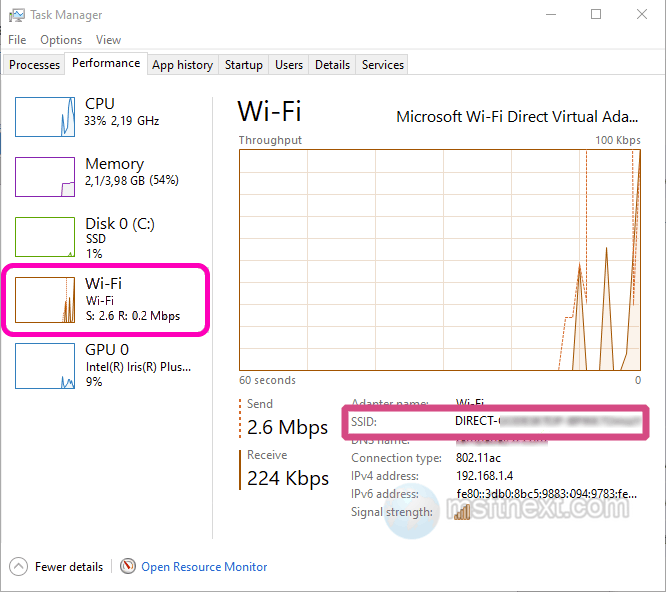Wireless network access points can be created not only by mobile phones but also by laptops and modern desktop computers. Windows may enable this feature without user permission, which can cause suspicion of a virus infection. However, in most cases, the sharing of a wireless network is enabled for legitimate reasons.
The network name typically starts with “DIRECT” followed by the computer name and a few letters. A new section called “Wi-Fi Direct” in the Task Manager’s “Performance” tab also indicates the presence of a wireless network.

Note: Wi-Fi Direct is a wireless communication standard that allows you to establish a direct (without a router) connection between devices.
Enabling the “Project to this PC” function automatically creates the “DIRECT-PC-NAME” network. The feature itself transfers mobile device screen’s content to a computer. Disabling screen projection in the “Settings” app under the “System” section, will disable the DIRECT network associated with the computer name. To do this, go to the “System” section of the “Settings” application , switch to the “Projection to this computer” subsection and set the value to “Always disabled (recommended)” . As a result, the DIRECT wireless network with the computer name will be disabled.

There are other scenarios where a computer can share the internet. Those include the Mobile Hotspot function, third-party applications for wireless data exchange, or creating an Ad-Hoc wireless local network with Windows tools.
